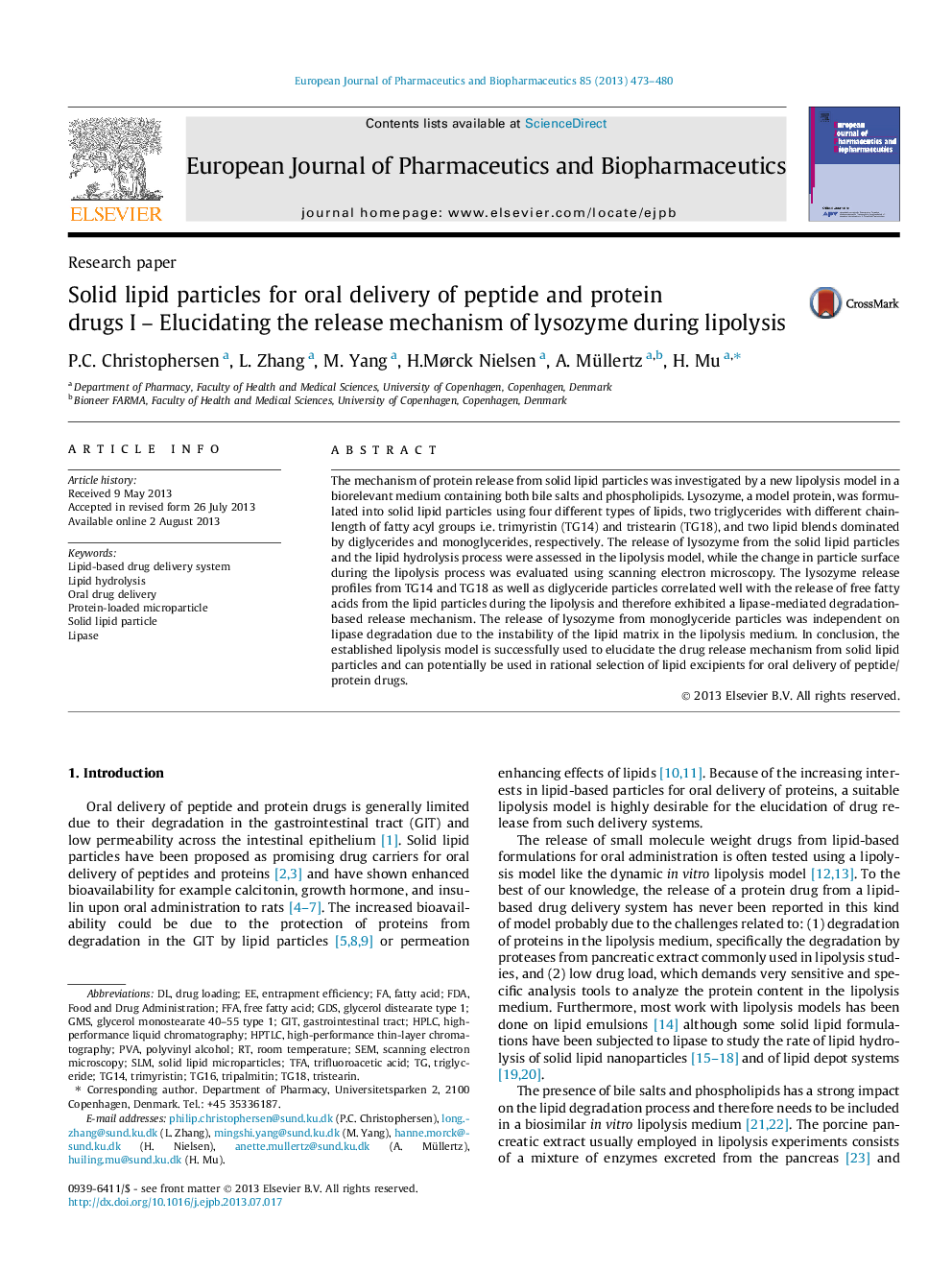| Article ID | Journal | Published Year | Pages | File Type |
|---|---|---|---|---|
| 2083712 | European Journal of Pharmaceutics and Biopharmaceutics | 2013 | 8 Pages |
The mechanism of protein release from solid lipid particles was investigated by a new lipolysis model in a biorelevant medium containing both bile salts and phospholipids. Lysozyme, a model protein, was formulated into solid lipid particles using four different types of lipids, two triglycerides with different chain-length of fatty acyl groups i.e. trimyristin (TG14) and tristearin (TG18), and two lipid blends dominated by diglycerides and monoglycerides, respectively. The release of lysozyme from the solid lipid particles and the lipid hydrolysis process were assessed in the lipolysis model, while the change in particle surface during the lipolysis process was evaluated using scanning electron microscopy. The lysozyme release profiles from TG14 and TG18 as well as diglyceride particles correlated well with the release of free fatty acids from the lipid particles during the lipolysis and therefore exhibited a lipase-mediated degradation-based release mechanism. The release of lysozyme from monoglyceride particles was independent on lipase degradation due to the instability of the lipid matrix in the lipolysis medium. In conclusion, the established lipolysis model is successfully used to elucidate the drug release mechanism from solid lipid particles and can potentially be used in rational selection of lipid excipients for oral delivery of peptide/protein drugs.
Graphical abstractFigure optionsDownload full-size imageDownload high-quality image (90 K)Download as PowerPoint slide
